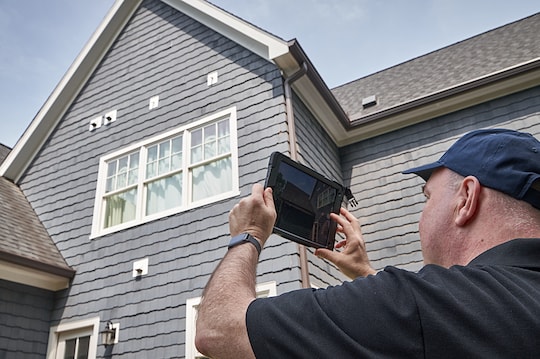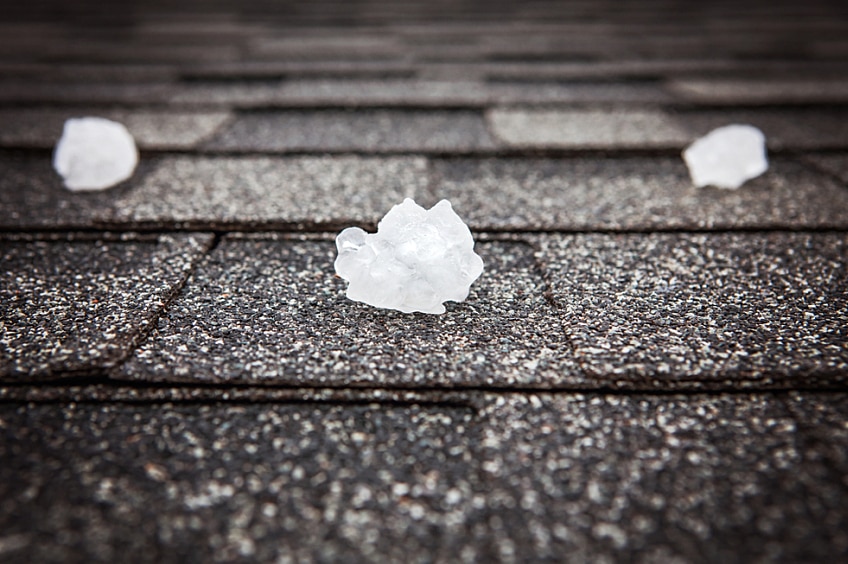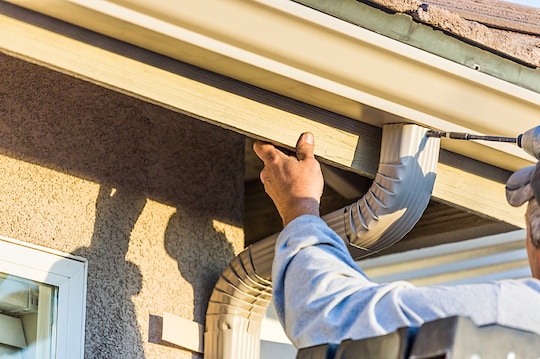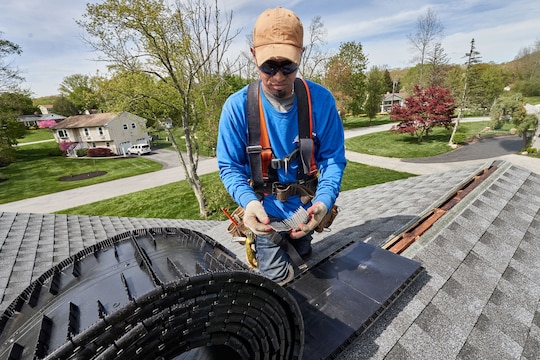
If you are a homeowner who lives in an area prone to hail storms, it may make sense to consider installing a shingle that meets the requirements of the UL 2218 Class 4 impact test. Shingles and accessories that meet this rigorous standard for impact-resistantance can help give your roof a fighting chance against this harsh weather.1
How Strong Are UL 2218 Class 4 Impact-Resistant Shingles?
To qualify as UL 2218 Class 4 impact-resistant, shingles have to pass the standardized UL 2218 assessment—colloquially known as the "steel ball test." During this assessement a 2-inch steel ball is dropped, twice, from a 20-foot height on an installed shingle to evaluate the its ability to withstand the impact. The shingle is then examined to see if any damage has occurred and determine a pass or fail. A pass result will show no evidence of ruptures or cracks through the shingles immediately after impact.
UL 2218 Class 4 is the highest possible rating level for asphalt shingles. The lower ratings that can be given are known as Class 1, 2, and 3. The difference between the classes is the size of the steel ball used to test them.
Who Should Install Impact-Resistant Shingles?
If you're a homeowner in an area likely to face hail, shingles that pass the UL2218 Class 4 impact test are a great option. In 2021, the top U.S. states with hailstorms included Kansas, Nebraska, South Dakota, and Texas. However, if you don't live in a stormy area, a UL 2218 Class 4 impact-resistant roof may not be necessary.
Benefits of an Impact-Resistant Roof
- UL 2218 Class 4 impact-resistant shingles are better able to withstand the impact of a 2-inch steel ball than standard architectural shingles.
- Possible discounts on your home insurance.2
- Potential Increase in home resale value. Installing a new impact-resistant roof may help increase your home's value if you're located in an area prone to hail.
Are Impact-Resistant Shingles Worth the Money?
Impact-resistant shingles are considered premium and generally cost 10–25% more than standard asphalt shingles. However, if you live in a hailstone-prone area, having shingles and accessories that pass the UL 2218 Class 4 impact test may be worth it.
GAF carries a range of impact-resistant roof products:
- GAF Timberline® AS II Class 4 Shingles: This option is made with SBS-modified asphalt, which makes shingles more flexible and better able to withistand impact stress than standard architectural shingles. The shingles are not warranted to withstand hail damage, but they do come with a 25-year StainGuard Plus™ Algae Protection Limited Warranty3 against blue-green algae discoloration. They are also eligible for the WindProven™ Limited Wind Warranty4 when installed with the required combination of four qualifying GAF accessories.
- GAF Seal-A-Ridge® AS SBS-Modified IR Ridge Cap Shingles: Made to complement Timberline® AS II shingles, these ridge cap shingles may also qualify for home insurance discounts. These shingles are not warranted to withstand hail damage.
- GAF Grand Sequoia® AS Class 4 Shingles: These artisan-crafted shingles are also made with SBS-modified asphalt, making them more flexible and better able to withistand impact stress than standard architectural shingles. They may also qualify for insurance discounts. As with the previous options, these shingles are not warranted to withstand hail damage.
To get more information about this class of shingles and find out if your home would benefit from added protection, contact a local roofing contractor.






